Recruiting the most recent national champion sounds like a smart idea if you need to find a head coach. On Wednesday, Jim Harbaugh, a former Michigan player, was hired by the Los Angeles Chargers to take over. Harbaugh returns to the NFL following nine seasons at the university level. From 2011 to 2014, he played four seasons with the San Francisco 49ers, going 44-19-1.
Let me begin with the conclusion: This hire is excellent. Aside from former New England Patriots coach Bill Belichick, Harbaugh has to be the most qualified candidate available if the Chargers were going to employ someone to rebuild their organization. Of course, things can go horribly wrong in the NFL on all sides. It appears that this is the appropriate spot for Harbaugh to go if he ever wanted to return to the NFL. Though there is still work to be done, the developments for L.A. going forward may prove to be even more fascinating than its hiring.
Prior to all of that, let’s examine this hire from the viewpoints of each party. Why does this fit so well?

The side of Harbaugh
After losing out to Kevin O’Connell in an interview with the Vikings two years prior, Harbaugh said that “this is the last time” he would look for a job in the NFL. He met virtually with the Broncos in the previous season before withdrawing from consideration for Denver’s position. After winning a national title this year, it seems that the NFL and the opportunity to win a Super Bowl were too much to resist.
The Chargers’ vacancy appears to be the kind of gig that would most closely fit Harbaugh’s requirements if he were going to pursue an NFL career. The combination of him and the Chargers is a stronger fit than the prior vacancies in Minnesota and Denver, even if the completed transaction at Michigan is dismissed. When I placed the Los Angeles vacancy as the second most likely opening early in the offseason, I wasn’t quite sold on it, but there were aspects about it that should resonate with Harbaugh, particularly given what transpired during his first stint in the league.
The team already has a quarterback on staff, to begin with. Justin Herbert is a talented quarterback who is only 25 years old and has not yet reached the level of superstar. Harbaugh will inherit Herbert. As far as I’m concerned, Herbert’s new coach wouldn’t have accepted this position if he didn’t think Herbert had what it takes to make the big leap.
In the coach’s opinion, coaching Andrew Luck at Stanford would have been the last time he had a quarterback this outstanding to mentor. After Harbaugh assumed leadership of the 49ers, he acquired Alex Smith and selected Colin Kaepernick with a second-round choice. Prior to Kaepernick taking over in 2012, Smith began in 2011. After the coach showed a long-standing interest in the 2011 first-round pick, Blaine Gabbert was also acquired by the 49ers; however, Gabbert didn’t make his San Francisco debut until after Harbaugh had departed for Michigan.
Though there were rumors that Harbaugh might take over a club similar to the Falcons and choose Michigan quarterback J.J. McCarthy, he decided to head the Chargers, which puts an end to that line of thinking. Herbert signed a five-year, $262.5 million deal before the seasons even began, and the team would not be able to afford the $108.5 million in dead money that would result from a trade. It is unlikely that Harbaugh will get back together with his championship-winning quarterback anytime soon.
Personnel control is the other component that Harbaugh would probably like most. During their time together with the 49ers, he notoriously drifted away from general manager Trent Baalke, which caused friction between the coach and both Baalke and the team’s ownership. The management informed Harbaugh that he wouldn’t be coming back in 2014 after the team dropped three straight games to finish at 7-7. Even though the 49ers described his final game of the season as a parting of ways, Harbaugh thought he had been dismissed.
Prior to handing things over to Kyle Shanahan and John Lynch in 2017, the 49ers cycled through Jim Tomsula and Chip Kelly with abysmal results. They selected Baalke over Harbaugh. Adofo-Mensah in Minnesota and George Paton in Denver are two examples of organizations where Harbaugh would never have an easy time getting a job if they were already run by a general manager. Two of the coaches who had been given both personnel and coaching responsibilities (Belichick and Pete Carroll) were dismissed earlier this month because most NFL organizations are just not ready to give one person this kind of authority.
There’s no general manager in the building for Los Angeles after the Chargers sacked Tom Telesco in December. The Bolts made the revealing decision to employ Harbaugh before selecting their general manager. At the very least, the person they select to handle personnel matters must feel at ease working with Harbaugh as head coach, and Harbaugh must be able to express whether he will mesh well with the team owner, Dean Spanos, whatever candidate he chooses. Though Harbaugh was the first of the two to join the company and is a sought-after prospect, it appears that the coach will have his way rather than whoever ends up here as general manager when the inevitable push comes to shove later on.
Perhaps only the Chargers’ head coaching position offered some degree of personnel autonomy out of the eight NFL head coaching positions that were available this offseason. After their coaches were fired, the general managers of the Titans and Seahawks took on additional authority. There was a general manager that the Commanders were going to appoint. It has been a terrible season for the Patriots, Raiders, and Panthers since they gave a coach personnel power. Terry Fontenot’s decision-making may have been delegated to a new coach by the Falcons. Los Angeles, though, was the only team with a clear path to the position and nothing that would prevent a coach of major influence from taking it.
Additionally, Harbaugh lands in a place that will make recruiting simple. Although warm-weather regions like Texas and Florida provide players with incentives like as state income tax exemptions, California does not match such offers. However, Los Angeles has always been a highly sought-after destination for free agents in all major American sports. In addition to drawing in big names, the Rams have been successful in signing players at a lower cost than they would have elsewhere. A guy like Ahkello Witherspoon, who played for the Rams this season for almost the shortest amount of time while producing great results, or a well-known veteran toward the conclusion of his career, like Clay Matthews or Bobby Wagner, can be an example of it. Selling players on Los Angeles should be Harbaugh’s easiest task.
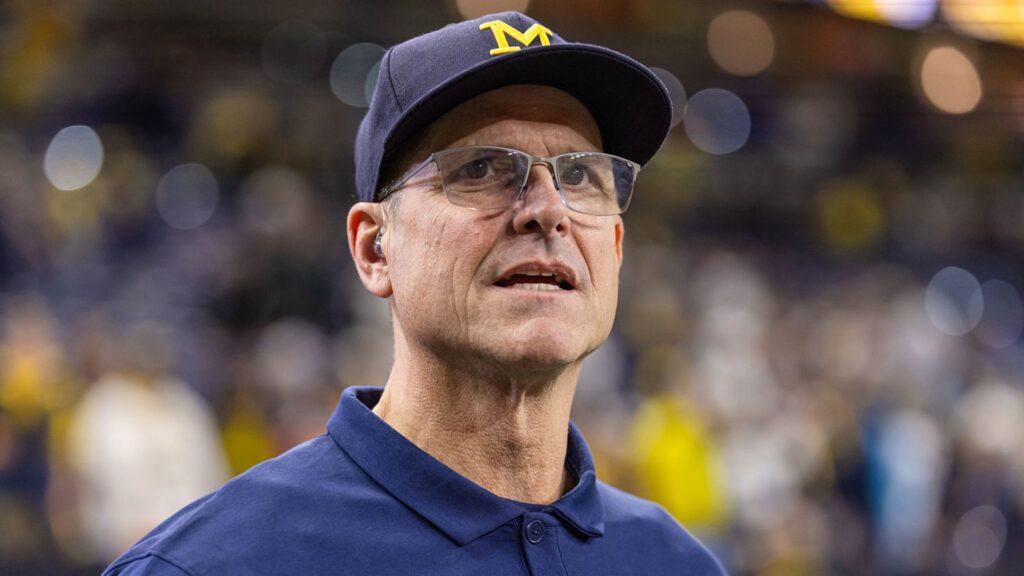
On the Chargers’ end
Although winning the hearts and minds game against the Rams in Los Angeles shouldn’t be Spanos’ main objective, the Chargers have to feel like they have limited options for attention-grabbing things to accomplish. For the most part, the Chargers have been an afterthought in Los Angeles during Sean McVay and the Rams’ consistent run of success. Opponent fans may go to a warm-weather location to cheer for their team while also knowing that they will probably be surrounded by more of their brothers than Chargers supporters, which is why opponent fans usually take over the Bolts’ home games. Harbaugh’s presence won’t make people fall in love with this squad overnight, but after Herbert failed to make an impact, the Chargers in Los Angeles may need a winning coach if they hope to win things over the long run.
It is reasonable to anticipate that Harbaugh will right the ship. After taking over in 2004, Harbaugh led the University of San Diego team—which had never won more than ten games—to victory in his second and third seasons. In 2007, he took over a Stanford squad that had a record of 1-11. He managed to turn things around in Year 3 and led the club to a 12-1 season in his last and fourth season there. Even though it took him six years to seriously contend for a national championship with Michigan, he took over Brady Hoke’s 5-7 squad and quickly elevated it to 10 wins—a feat the Wolverines accomplished in six of Harbaugh’s eight complete seasons in Ann Arbor.
What he achieved with the 49ers may have been the most spectacular turnaround. They wandered in the woods for over ten years when cap problems and poor drafting eventually brought an end to the dynasty that started during the Bill Walsh era. Under Dennis Erickson, they went 9-23; under Mike Nolan, they went 18-37; and under Mike Singletary, they went 18-22. During all of this, they had no winning seasons.
In a season when Week 5 probably stands out as the most memorable occasion, Singletary was let go at the end of the 2010 campaign. Smith, the first overall choice by the club in 2005, has started the season 0–4. Fans booed Smith off the field during a lackluster performance against the Eagles, yelling, “We want Carr,” a reference to journeyman backup quarterback David Carr, who hadn’t played a game since 2007. Due to an injury, Smith subsequently lost his job to Troy Smith, who filled it until Alex Smith took it back for the remainder of the season.
It appeared that a clear split between the highly anticipated potential and the 49ers was imminent as Alex Smith was a free agent.
Rather, Harbaugh invited Smith back, even if the lockout prevented it from happening until July. Without any delay, he transformed into a new quarterback. In addition to surpassing a 60% completion percentage and 7.0 yards per attempt for the first time in his professional career, Smith reduced his interception rate from 2.9% to a league-best 1.1%. 13-3 for a quarterback who had gone 19-31 in six professional seasons. The same supporters who had jeered Smith off the field the previous season cheered for their quarterback when he engaged in a blow-out match with Drew Brees in one of the greatest playoff games in team history, which ended with a touchdown pass to Vernon Davis in the last minute that sealed a historic 49ers triumph. A locker room that had been “very separated” and the organization that Smith called “dysfunctional” came together behind Harbaugh in an instant.
When Harbaugh went to the Super Bowl the following year, it wasn’t with Smith starting as quarterback. Drafted in the second round out of Nevada, Kaepernick had emerged from a pistol assault that at the time didn’t resemble any NFL offensive. (The Chiefs tried using Tyler Thigpen with the pistol due to injuries sustained in 2008, but it didn’t work out.) It was believed at the time that Kaepernick was a raw talent whose physical attributes would be more useful in the NFL than his tape.
Rather than focusing on limiting Kaepernick’s ability to operate out of the pistol at the professional level, Harbaugh and offensive coordinator Greg Roman structured their scheme around the player’s dual skills as a thrower and runner. Roman designed a more gap-heavy quarterback run game for Kaepernick, who also put up eye-popping passing stats, during a season in which Robert Griffin flourished for Washington with the zone-read and other zone concepts. In the divisional round, Kaepernick’s 263 passing yards and 181 running yards against the Packers was one of the most impressive displays of dominance I’ve seen from a quarterback in my time covering the NFL. He also helped the 49ers come within one play of winning Super Bowl XLVII.
Beyond the quarterbacks, there were a ton of players that either succeeded in their first season with the 49ers or were much better after moving to San Francisco. Alex Boone, Michael Crabtree, NaVorro Bowman, Chris Borland, and Tarell Brown were among the players who Harbaugh got the best out of. Donte Whitner, Ahmad Brooks, and Carlos Rogers were all better with the 49ers than they had been in their previous stints.
Asante Samuel Jr., Quentin Johnston, and Zion Johnson—three guys the Chargers are expecting to see more of in 2024—are among the class of players they have. It is encouraging to think that Harbaugh can unite the team in Los Angeles, given his success in utilizing talent in San Francisco.
I suggested in a 2012 piece that Harbaugh may be the NFL’s most valuable player. Given that Harbaugh was making $5 million a year at the time and that the Browns were reportedly seeking to trade for him in February 2014, I proposed that Harbaugh was underpaid by half and that he was worth two first-round selections in a trade. All the Chargers have to pay for him is a $1.5 million buyout. Even while it’s true that Harbaugh’s 2014 season wasn’t great, this team still has a great potential. I would describe it as a buy-low deal, but is it really possible to get a player who recently won a championship for a cheap contract?
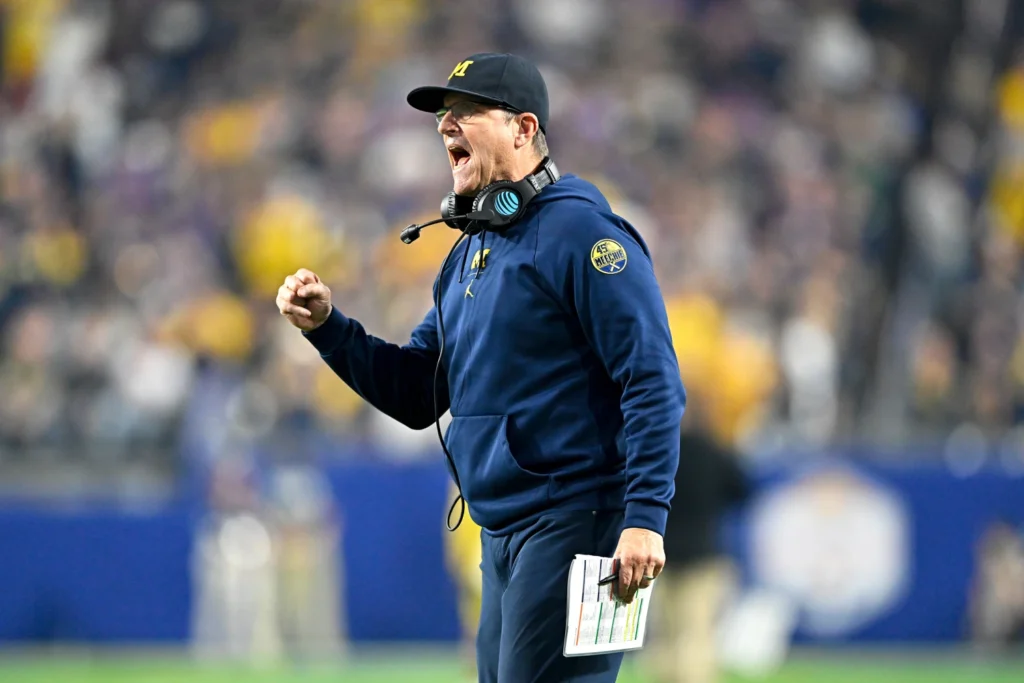
What is next for the Chargers under Jim Harbaugh?
I find this to be the most fascinating feature. Given that the Chargers are $44 million above the projected salary limit without re-signing mainstays Austin Ekeler, Gerald Everett, and Kenneth Murray, this season was already going to be a transitional one for the club. A few of those players won’t return, and Corey Linsley may have to retire due to a health issue. Both Keenan Allen and Khalil Mack are over 30 and have enormous cap amounts. Harbaugh will have to choose between bringing in younger players for critical roles or giving them new contracts to lower their cap implications.
Who Harbaugh choose to be his coordinators is the next significant challenge facing the Chargers and him. He sent one head coach candidate to the league from Michigan, Ravens defensive coordinator Mike Macdonald, who will either land a head coaching position elsewhere or be prevented by Baltimore from following his former boss to Los Angeles. Jesse Minter, who succeeded Macdonald and helped the Wolverines allow a national-best 10.4 points per game this season, seems like a more reasonable choice.
Minter would have appeared like an easy pick to join Harbaugh prior to Wednesday. However, word leaked out a few hours before Harbaugh was hired that Vic Fangio, the Dolphins’ defensive coordinator, was leaving after just one season. One of the top defensive coordinators in all of football, Fangio guided Miami to league leadership in defensive expected points added (EPA) per play over a 10-week period following Jalen Ramsey’s comeback and prior to any injuries to any of its edge rushers. Still, Fangio didn’t appear to fit in the locker room.
According to reports, Fangio would replace Sean Desai and Matt Patricia at the Eagles. However, how about getting back together with Harbaugh? Fangio oversaw defense under Harbaugh for the 49ers in San Francisco, where the team finished in the top three in scoring defense in 2011, 2012, and 2013. Under Brandon Staley, the Chargers tried a Fangio defensive, but they never appeared to be able to settle down. However, the team is already constructed in this manner, and Fangio could be able to develop that potential more effectively than Staley.
Additionally available is Harbaugh’s opposite-side coordinator from his stint in San Francisco. Roman moved with Harbaugh from Stanford to the 49ers, where he spent four seasons as the O-coordinator. Harbaugh oversaw the organization and had the authority to veto calls, while Roman was one of several playcallers in San Francisco at the time.
Later on, Roman called plays for the Ravens and Bills. Lamar Jackson was able to secure an MVP season in 2019 during the latter stop because to an offensive scheme designed by Roman that resembled an enhanced version of the one he used with Kaepernick in San Francisco. Jackson, who is predicted to win his second MVP award this season, seems to have reached a new level as a passer since Todd Monken took over as coordinator of Roman’s offense, which looked to be running out of steam.
Roman was the obvious choice to replace Kaepernick as coordinator in San Francisco, Jackson as coordinator in Baltimore, and Tyrod Taylor as coordinator in Buffalo, considering how much each player would contribute to the run game in addition to their passing ability. Despite his toughness and scrambling ability, Herbert is probably not the type of franchise quarterback the Chargers want running QB power five times a game. It seems sense that Chargers supporters, who watched Jackson thrive in a more varied passing approach after maybe feeling constrained at times by Roman, wouldn’t want that with Herbert.
Alternatively, I would point out that in 2011, Alex Smith had what was, at the time, a career-changing year thanks to the influence of Roman and Harbaugh. Though the 49ers played a more traditional passing approach with Smith than memory may suggest, they did employ him as a runner at times—the most memorable instance being his pivotal third-down sweep for a score in the playoff victory over the Saints. With all of Herbert’s skills, Roman (as well as Harbaugh) should have no problem assembling a strong offensive line if he can do that with Smith.
The incumbent, however, ought to have a solid argument in this instance. During the first half of the season, coordinator Kellen Moore had the Chargers in the top fourth of the league in both EPA per play (fifth) and points scored per drive (seventh) before injuries destroyed them in the second half of the season. Following his tenure with the Cowboys, Moore was a highly sought-after candidate for head coach. Although Dak Prescott produced what was perhaps his finest season following Mike McCarthy’s dismissal of Moore during the previous offseason, Moore was interviewed by the Chargers for the head coaching position during this process.
Before Shane Waldron was appointed by the Bears as offensive coordinator, ownership also prevented Moore from meeting with them; this seems to be a revealing indication of how highly they regard the 34-year-old. It’s unlikely that the 60-year-old Harbaugh will be compelled to accept an offensive coordinator he doesn’t like, but Moore may stay in Los Angeles the following season with a new coach.
Even while the Chargers’ decision to hire Harbaugh must be viewed as a win after such a poor season, much more has to be done. While important choices on senior mainstays will need to be made in the coming weeks, the coordinators’ identities may provide insight into how aggressively he intends to rebuild the roster. When he took a position in the NFL the last time, he had to go through a lockout before turning a 6-10 club that had been failing for ten years into an immediate Super Bowl contender. Now that he has a whole summer to prepare, Harbaugh will attempt to replicate the achievement with a 5-12 club that has disappointed for an even longer period. This ought to be enjoyable.
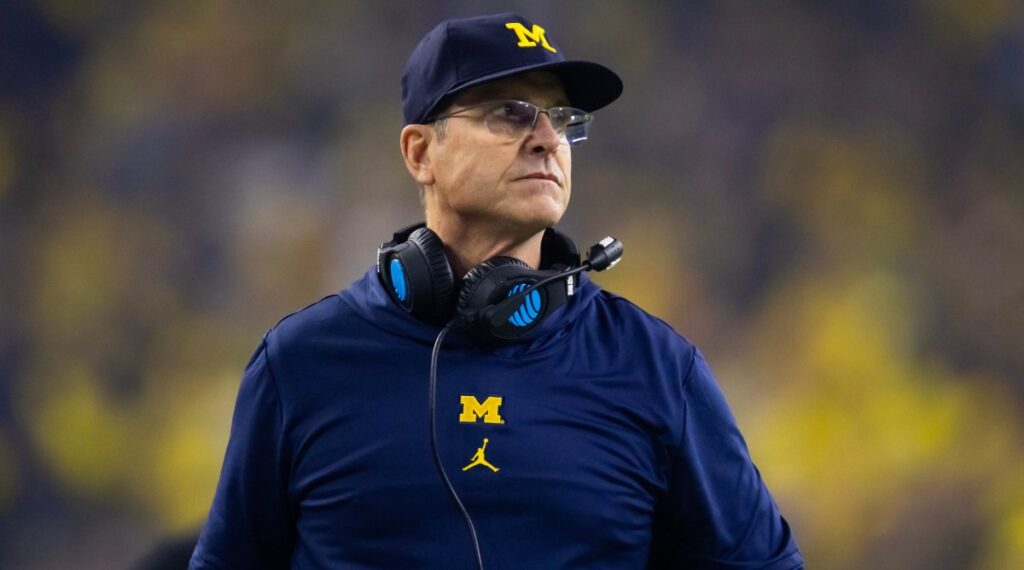



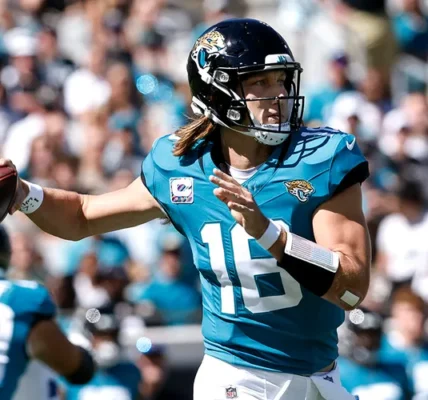
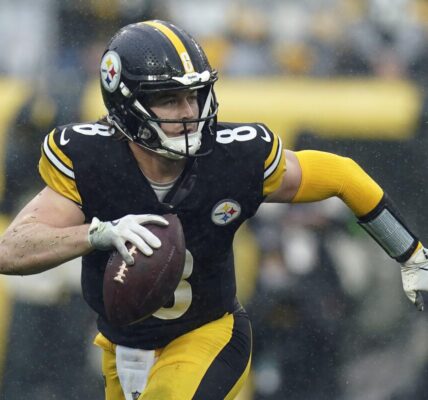
damarquis hakky
floyed braojos
chaya benckendorf
appollonia fiegl